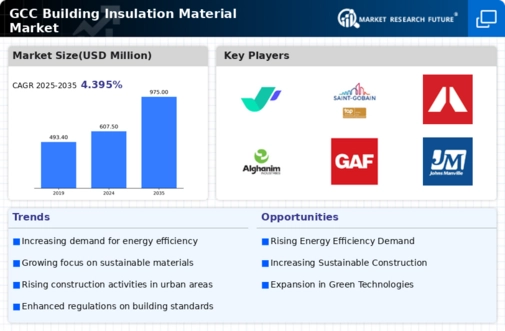The GCC Building Insulation Material Market is experiencing robust competition driven by an increase in construction activities and a heightened emphasis on energy efficiency within the region. The market consists of a variety of players ranging from global corporations to regional firms, each vying for a slice of the growing demand across commercial, residential, and industrial sectors. Innovations in insulation technologies, sustainability trends, and regulatory pressures aimed at reducing carbon footprints are reshaping how these companies compete. With the growing awareness of energy savings and environmental impact, firms are continuously adapting their strategies to introduce new products and solutions.
The competitive landscape is further intensified by price fluctuations, the availability of raw materials, and the need for companies to engage in strategic partnerships to secure their market positions.Sika has established a significant presence in the GCC Building Insulation Material Market thanks to its diverse and innovative product offerings. The company specializes in various insulation materials that cater to the architectural, industrial, and construction sectors. Sika’s strengths lie in its strong focus on research and development, enabling the launch of cutting-edge insulation solutions tailored to meet the specific needs of the GCC region.
Their commitment to sustainability resonates well with customers seeking energy-efficient solutions, providing Sika with a competitive edge. Furthermore, Sika's robust distribution network and local partnerships enhance its operational efficiencies, allowing the company to swiftly address market demands and customer preferences across the GCC countries.SaintGobain’s positioning in the GCC Building Insulation Material Market is underpinned by its comprehensive array of insulation products designed to serve the diverse needs of the region’s construction sector. Well-known for its high-performance insulation materials, SaintGobain focuses on solutions that not only improve energy efficiency but also enhance building comfort and safety.
The company benefits from a strong market presence owing to its strategic mergers and acquisitions, which have bolstered its capabilities and offerings. With a dedication to sustainable practices and innovation, SaintGobain continually develops products that align with the regulatory frameworks and environmental goals prevalent in the GCC. Its recognized names in insulation, coupled with a commitment to research, enable SaintGobain to maintain a leading position in the market, further solidifying its reputation among architects, contractors, and builders in the region.























Leave a Comment